You can use an eSIM-ready phone without the need for a physical SIM card inside. See our list of eSIM capable phones.
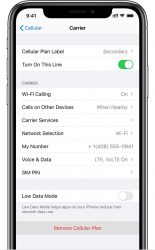 On many of the latest high-end smartphones from Apple, Samsung, Google and other manufacturers, you’ll find eSIM or ’embedded SIM’ technology inside. This allows you to get connected to your mobile network without the need for a physical SIM card inside your phone. You simply need to download an eSIM plan onto your phone.
On many of the latest high-end smartphones from Apple, Samsung, Google and other manufacturers, you’ll find eSIM or ’embedded SIM’ technology inside. This allows you to get connected to your mobile network without the need for a physical SIM card inside your phone. You simply need to download an eSIM plan onto your phone.
Some of the benefits of eSIM technology include being able to get connected to your mobile network faster, without the wait for a physical SIM card to arrive in the post. In most cases, it also allows you to use dual-SIM technology (e.g. to save money when travelling abroad, or to have your work phone number on the same device as your personal number).
In this article, we’ll look at the list of eSIM-compatible devices. We’ll also look at the key benefits and disadvantages of using eSIM technology.
Contents
What is eSIM?
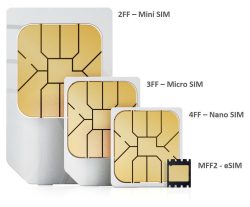 eSIM is the next generation of SIM card technology. It does away with a physical SIM card that needs to be placed inside your phone. Instead, you’ll get a reprogrammable chip to which you can download and install your eSIM.
eSIM is the next generation of SIM card technology. It does away with a physical SIM card that needs to be placed inside your phone. Instead, you’ll get a reprogrammable chip to which you can download and install your eSIM.
Compared to traditional SIM cards, there are numerous advantages to using an eSIM:
- eSIMs can be downloaded straight away. When it comes to installing a new eSIM, this is as simple as scanning a QR code on your phone. There’s no need to wait for a physical SIM card to arrive in the post and no faffing around with paperclips or SIM card tray ejectors.
- Most phones will allow you to use dual-SIM technology with eSIM. Most eSIM-compatible phones also support dual-SIM technology, allowing you to have two phone numbers at the same time on your device. For instance, this would allow you to have both your personal phone number and your work phone number at the same time on your phone. It’s also handy for travelling abroad as you can pick up a cheaper eSIM plan for your trip.
- eSIM can save space inside your mobile phone. With the latest smartphones packing in more and more technology, space is increasingly at a premium in your device. eSIM technology helps to save space in your phone.
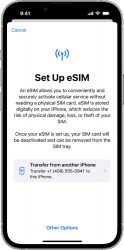 There are also some disadvantages to using eSIM technology:
There are also some disadvantages to using eSIM technology:
- Only a limited number of plans are available on eSIM. At present, most mobile networks only offer their plans on a traditional plastic SIM card. In addition, where mobile networks do offer eSIM support, this is sometimes only available on the more expensive post-pay (contract) plans. For instance, there are only 3 UK mobile networks offering eSIM plans (compared to the 20+ networks offering traditional plastic SIM cards).
- Switching device can be more complicated with an eSIM. Traditionally, it’s been possible just to remove the physical SIM card from your phone and to put it inside another device. With eSIM, it’s a more complicated process as you’ll need to remove the eSIM from your old device and install it on your new device.
- Only a limited number of devices support eSIM. If you’d like to switch to a different device that doesn’t have eSIM support, you’ll need to change your eSIM back into a physical SIM card.
List of eSIM Devices
In the following section, we’ll list all of the devices available that have support for eSIM technology.
If you’d like to use an eSIM from a different provider, you’ll need to make sure your handset is unlocked from your mobile network. You should also check with your eSIM provider to make sure their service is compatible with your phone:
- EE: What devices can I use eSIM with?
- O2: Which O2 devices support esim?
- Vodafone: Is your device compatible with eSIM?
- Airalo (roaming): What devices support eSIM?
- Ubigi (roaming): eSIM enabled mobile devices
Apple iPhone with eSIM
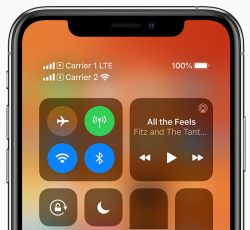 If you’re using an iPhone, eSIM technology is available on the following devices:
If you’re using an iPhone, eSIM technology is available on the following devices:
- Apple iPhone 11
- Apple iPhone 11 Pro
- Apple iPhone 11 Pro Max
- Apple iPhone 12
- Apple iPhone 12 Mini
- Apple iPhone 12 Pro
- Apple iPhone 12 Pro Max
- Apple iPhone 13
- Apple iPhone 13 Mini
- Apple iPhone 13 Pro
- Apple iPhone 13 Pro Max
- Apple iPhone 14
- Apple iPhone 14 Plus
- Apple iPhone 14 Pro
- Apple iPhone 14 Pro Max
- Apple iPhone 15
- Apple iPhone 15 Plus
- Apple iPhone 15 Pro
- Apple iPhone 15 Pro Max
- Apple iPhone SE 2020
- Apple iPhone SE 2022
- Apple iPhone XS
- Apple iPhone XS Max
- Apple iPhone XR
If you have an iPhone 14 that was purchased in the USA, this will be an eSIM-only device. You will not be able to use a physical SIM card inside your device.
Meanwhile, if your iPhone was purchased in China, eSIM support may differ from global models. At present, iPhones sold in Mainland China do not support eSIM technology. Meanwhile, if your iPhone was purchased in Hong Kong or Macau, eSIM technology will only be available on the iPhone 13 mini, iPhone 12 mini, iPhone SE (2nd and 3rd generation) and iPhone XS.
On the iPhone 13 and iPhone 14, it’s possible to use up to two eSIMs at the same time (this also known as dual-eSIM). Earlier models of the iPhone allow you to use a maximum of one eSIM at a time (along with a physical SIM card).
For more information about how to use eSIM on the iPhone, please see Apple’s official website.
Samsung Galaxy Phones with eSIM
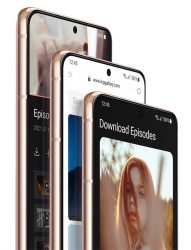 eSIM technology is available on the following Samsung Galaxy smartphones:
eSIM technology is available on the following Samsung Galaxy smartphones:
- Samsung Galaxy A54
- Samsung Galaxy Note 20
- Samsung Galaxy Note 20 Ultra
- Samsung Galaxy S20
- Samsung Galaxy S20 5G
- Samsung Galaxy S20+ 5G
- Samsung Galaxy S20 Ultra 5G
- Samsung Galaxy S21
- Samsung Galaxy S21+
- Samsung Galaxy S21 Ultra
- Samsung Galaxy S22
- Samsung Galaxy S22+
- Samsung Galaxy S22 Ultra
- Samsung Galaxy S23
- Samsung Galaxy S23+
- Samsung Galaxy S23 Ultra
- Samsung Galaxy Z Flip
- Samsung Galaxy Z Flip 3
- Samsung Galaxy Z Flip 4
- Samsung Galaxy Z Flip 5
- Samsung Galaxy Z Fold 2
- Samsung Galaxy Z Fold 3
- Samsung Galaxy Z Fold 4
- Samsung Galaxy Z Fold 5
If your Samsung Galaxy device was purchased in South Korea, eSIM technology will only be available on the Galaxy Z Fold 4 and the Galaxy Z Flip 4.
There’s more information on Samsung’s website about how to use eSIM on your Galaxy device.
Google Pixel Phones with eSIM
![]() You can use an eSIM on the following Google Pixel smartphones:
You can use an eSIM on the following Google Pixel smartphones:
- Google Pixel 31
- Google Pixel 3 XL1
- Google Pixel 3a
- Google Pixel 3a XL
- Google Pixel 4
- Google Pixel 4 XL
- Google Pixel 4a
- Google Pixel 4a 5G
- Google Pixel 5
- Google Pixel 5a
- Google Pixel 6
- Google Pixel 6 Pro
- Google Pixel 6a
- Google Pixel 7
- Google Pixel 7 Pro
- Google Pixel 7a
- Google Pixel 8
- Google Pixel 8 Pro
- Google Pixel Fold
1 The Pixel 3 and Pixel 3 XL are able to hold both a physical SIM card and an eSIM. You can switch between the two but only one of them can be active at a given time. You therefore won’t be able to have two phone numbers at the same time on your phone.
There’s further information on Google’s website about how to use eSIM on the Google Pixel.
Other Android Phones with eSIM
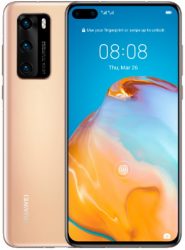 It’s also possible to use an eSIM on the following Android-powered devices from other manufacturers:
It’s also possible to use an eSIM on the following Android-powered devices from other manufacturers:
- Fairphone 4
- Huawei P40
- Huawei P40 Pro
- Huawei Mate 40
- Motorola Razr2
- Oppo Find X3 Pro
- Oppo Find X5
- Oppo Find X5 Pro
- Sony Xperia 10 III Lite
- Sony Xperia 10 IV
- Sony Xperia 1 IV
2 The Motorola Razr is an eSIM-only device. It doesn’t support physical SIM cards.
You can normally install and manage your eSIMs through the ‘Settings’ app on your Android phone.
Apple iPads with eSIM
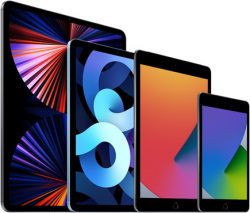 The following iPads also have eSIM support, when you choose a device that supports cellular connectivity:
The following iPads also have eSIM support, when you choose a device that supports cellular connectivity:
- iPad Air (3rd & 4th gen)
- iPad Pro 11″
- iPad Pro 12.9″ (3rd gen & newer)
- iPad (7th gen & newer)
- iPad Mini (5th gen & newer)
There’s more information about this on the Apple website.
How To Use eSIM
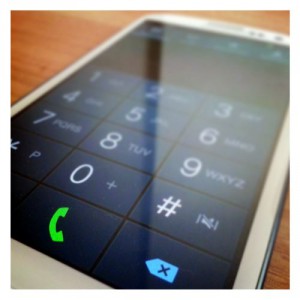 If you’d like to start using eSIM technology on your phone, you can order an eSIM plan from your mobile network’s website. Alternatively, it might be possible to transfer your existing plan onto an eSIM (check with your provider to see whether this is possible). If you’re based in the UK, see our guide to eSIMs on UK networks.
If you’d like to start using eSIM technology on your phone, you can order an eSIM plan from your mobile network’s website. Alternatively, it might be possible to transfer your existing plan onto an eSIM (check with your provider to see whether this is possible). If you’re based in the UK, see our guide to eSIMs on UK networks.
Once you’ve set up an eSIM on your phone, you’ll normally also be able to activate dual-SIM functionality on it. This will allow you to:
- Have two phone numbers at the same time on your phone. For instance, you can have both your work phone number and your personal phone number at the same time on your phone. This would allow you to make and receive calls on both phone numbers, without the need to carry two separate devices.
- Benefit from lower prices when you travel. For instance, you could get a cheaper eSIM plan when you travel abroad. This may be cheaper than roaming on your normal domestic SIM card.
- Benefit from additional exclusive customer offers. You’ll be able to benefit from the exclusive customer offers on both your eSIM and your regular SIM. For instance, this might include EE’s Smart Benefits, O2’s inclusive Disney+, O2 Priority, Three+, Vodafone’s VeryMe Rewards, etc.
More Information
For more information, see our guide to eSIM on UK networks and the best eSIM plans in the UK.


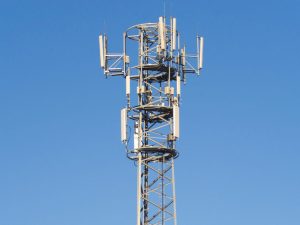


Ed said:
Motorola Moto G53, G54 support eSIM
Anwar Mahmood said:
Nokia X30 5G is eSIM capable too
https://www.nokia.com/phones/en_gb/support/nokia-x30-5g-user-guide/use-esim